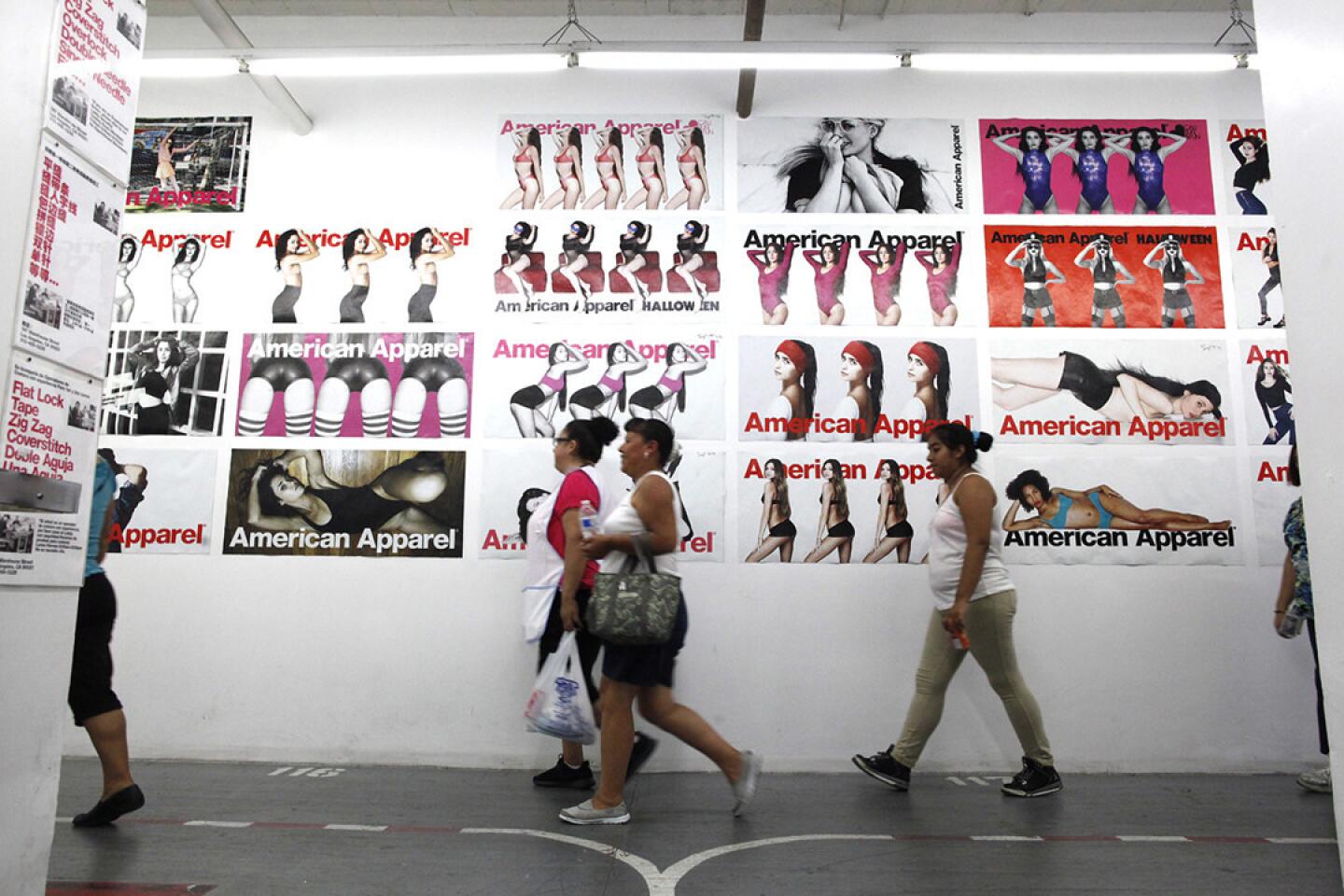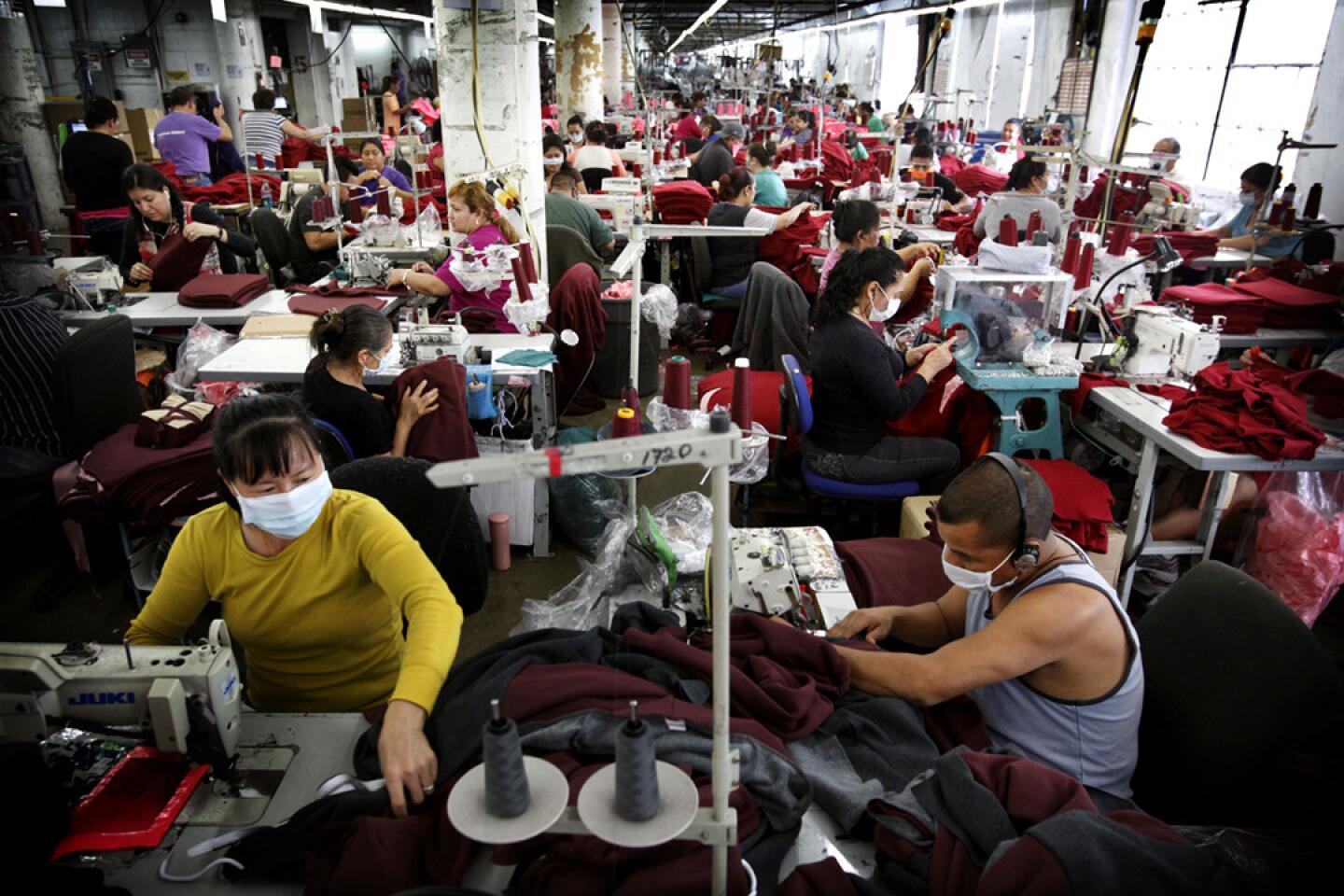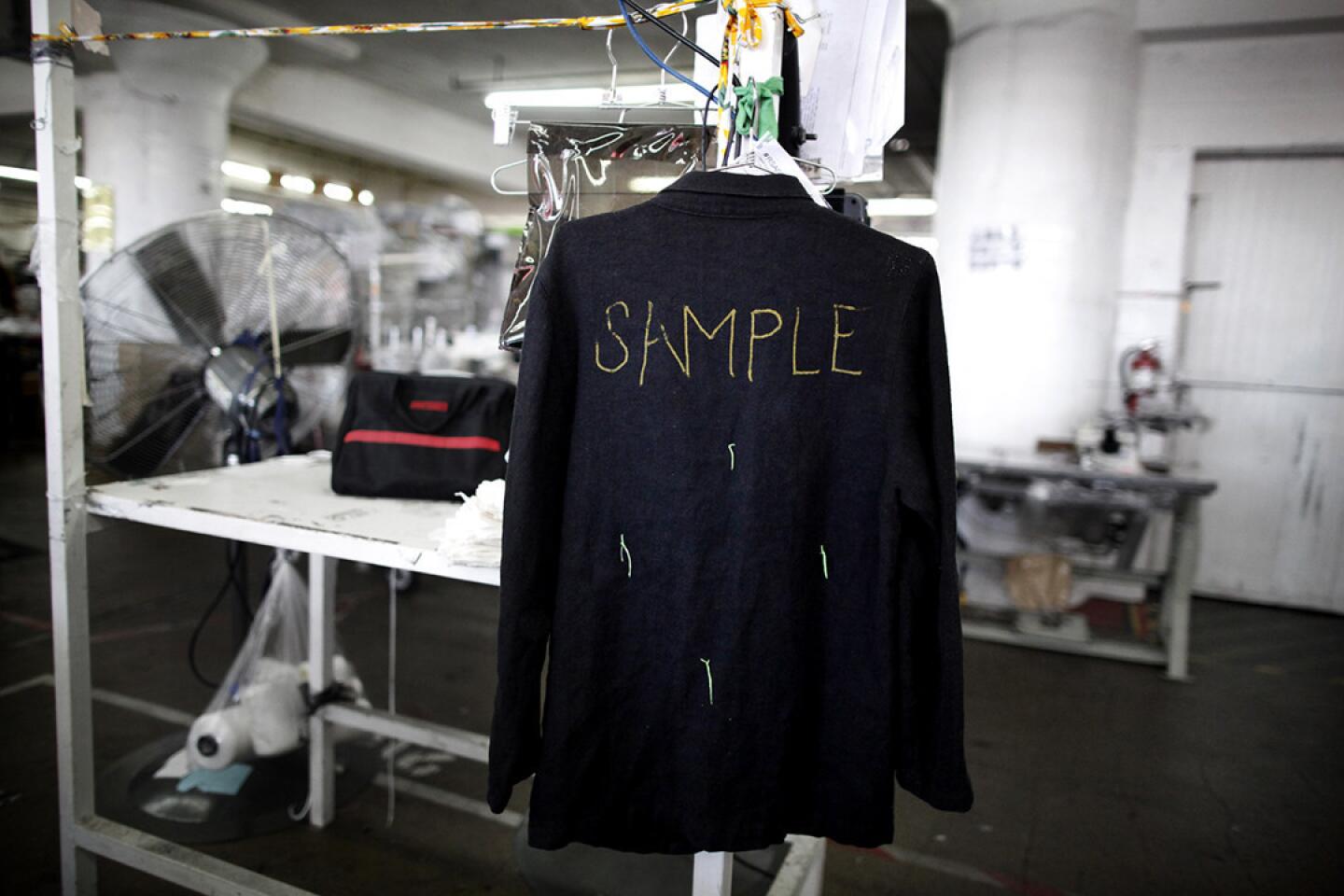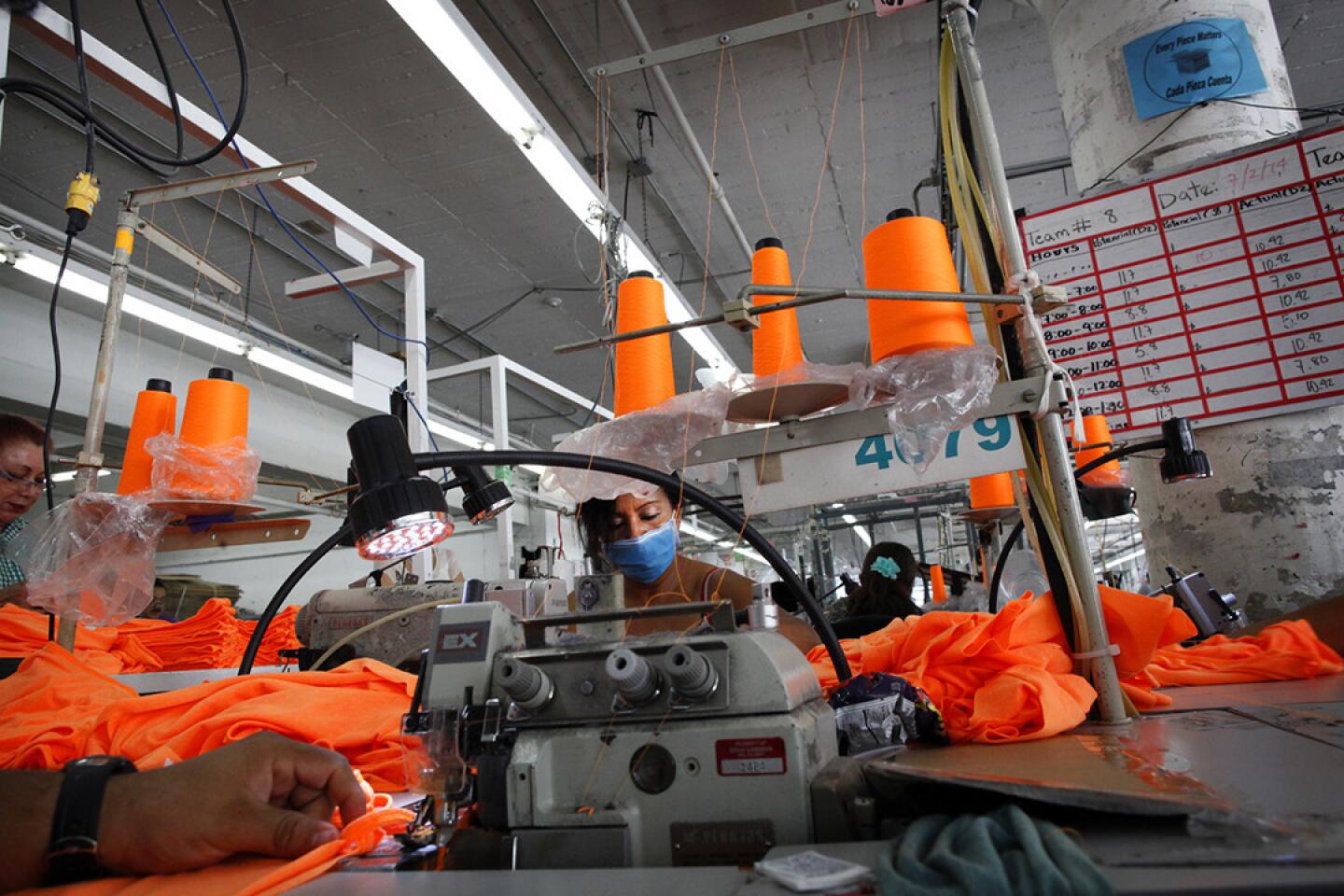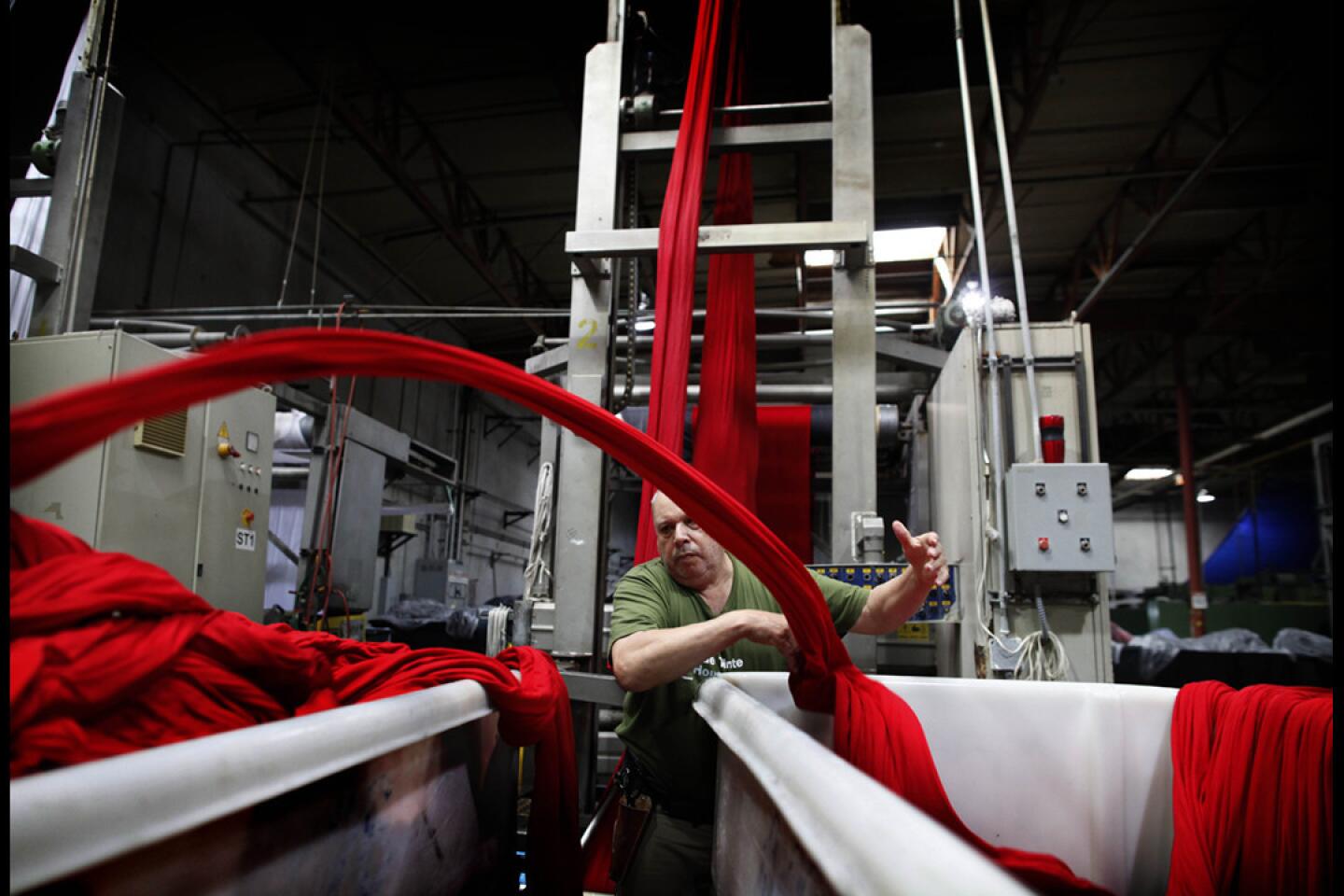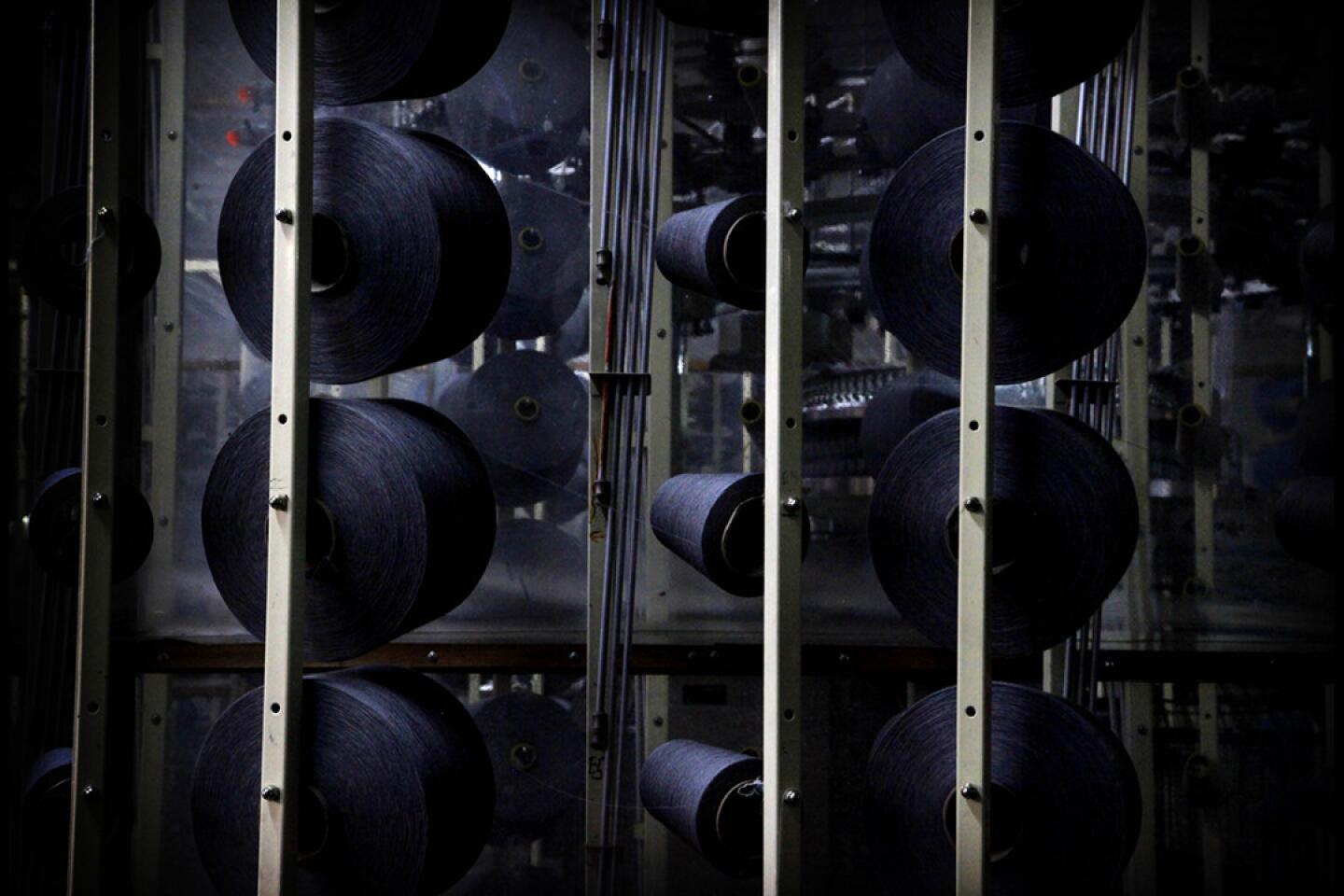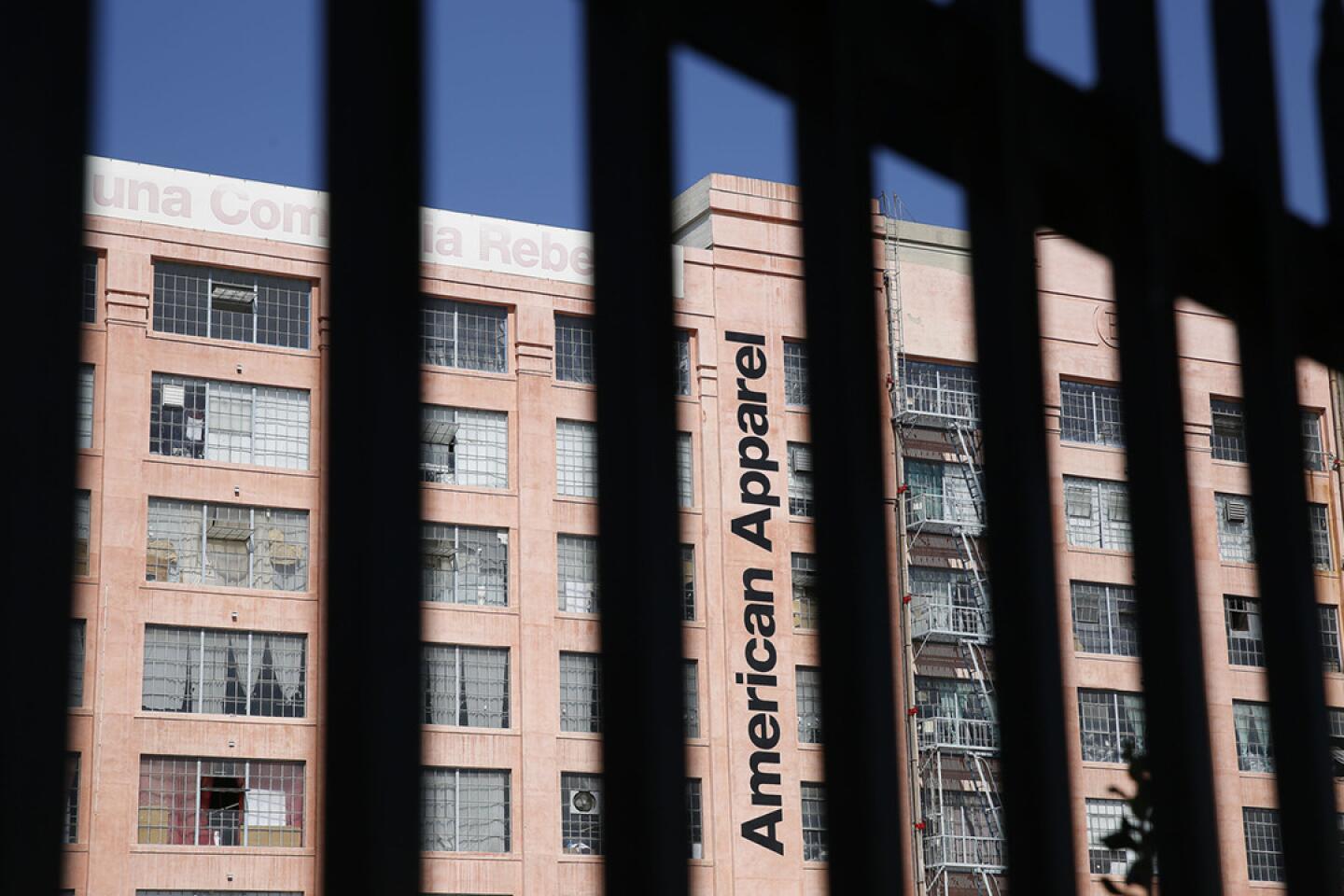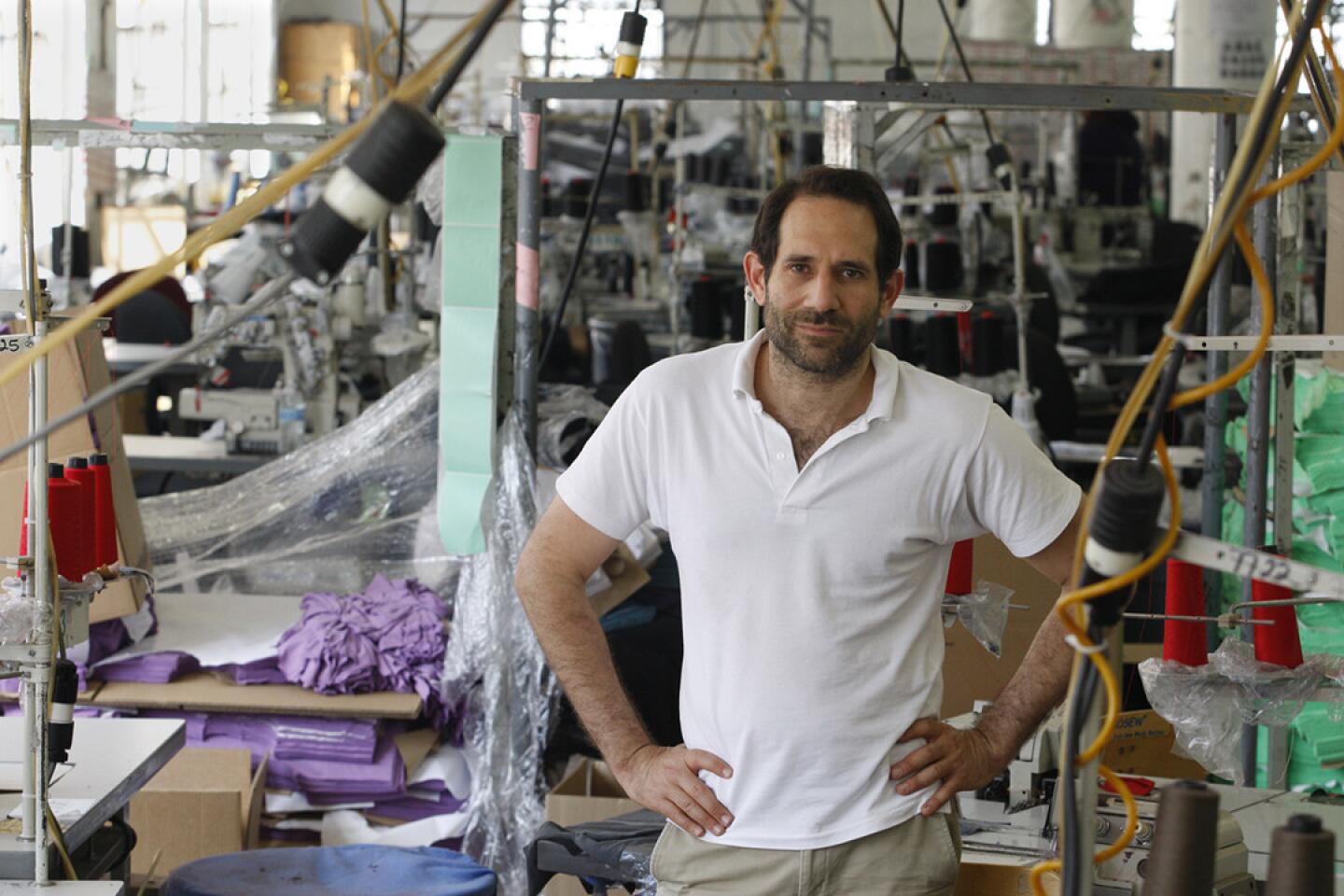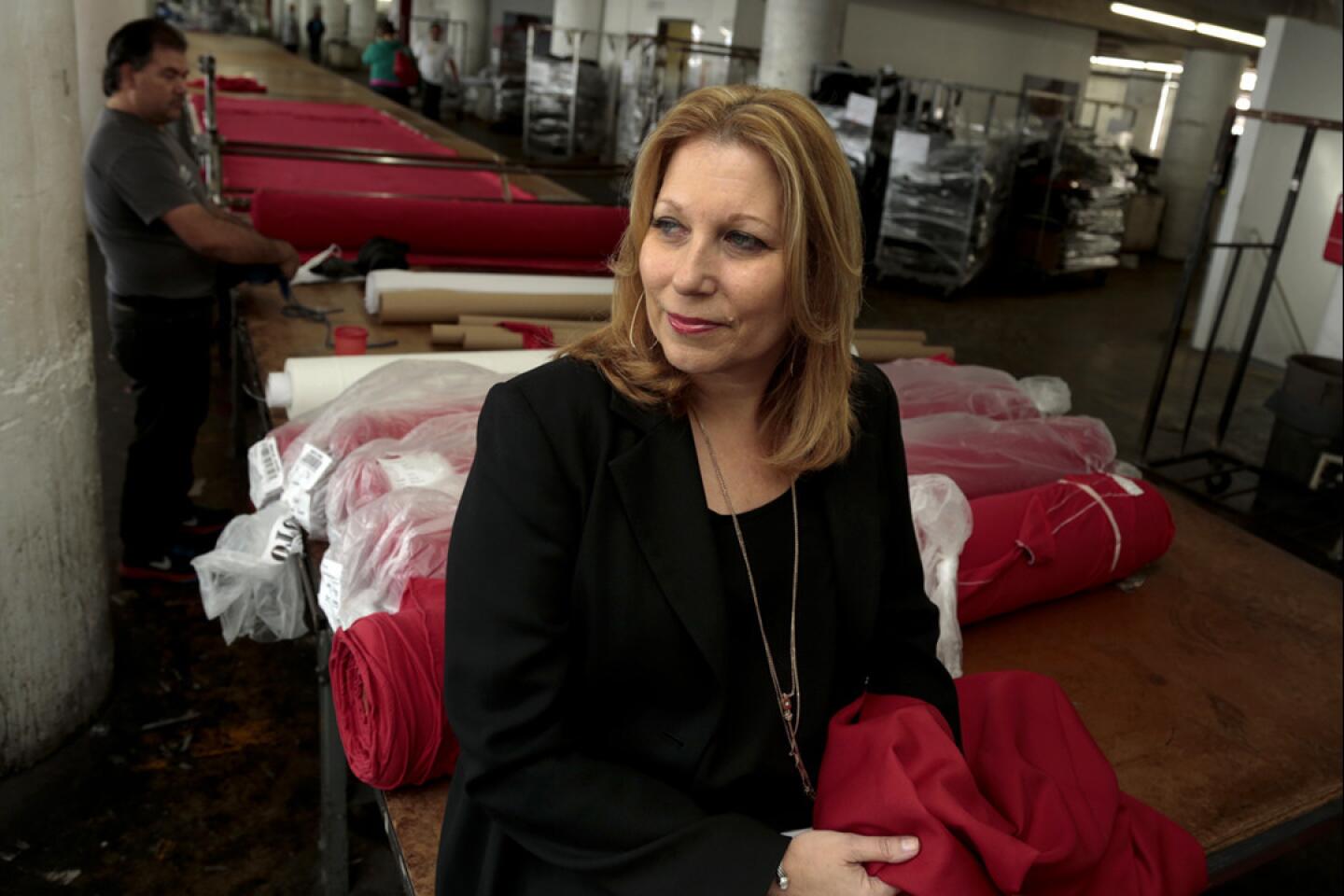American Apparel hangs on to its made-in-America model — by a thread
- Share via
Doubts are building about whether American Apparel can stay in the U.S. — and in Los Angeles.
Even after the company filed for Chapter 11 bankruptcy protection Monday, American Apparel Chief Executive Paula Schneider said management had no plans to move manufacturing operations from Los Angeles to foreign soil. The restructuring that lies ahead, she said, will enable American Apparel to keep production in the U.S.
“That’s what makes us a really important company and a company that needs to thrive and be saved,” she said.
But many analysts said American Apparel may have no choice — and that the company would be foolhardy not to be planning a move soon.
See the most-read stories this hour >>
“There is too much emphasis being placed in having things made in America,” said Lloyd Greif, chief executive of investment banking firm Greif & Co.
The company needs to move, he said, “if they want to survive.”
Company executives have consistently pointed out the benefits of manufacturing in Los Angeles. Not only does American Apparel Inc. prominently tout its “sweatshop-free” wages for employees on billboards, but it can respond to trends in the market and rush new products to stores quickly.
American Apparel employs about 4,600 sewing and manufacturing workers in Southern California.
The labor costs in Los Angeles are dramatically higher than those in other countries skilled at apparel manufacturing. A garment employee working a 40-hour week — at California’s minimum wage of $9 an hour — will earn $1,440 a month. In comparison, monthly minimum wages for apparel workers are $68 in Bangladesh, $90 in Vietnam and $127 in Mexico, according to the International Labor Organization. It is $156 in China, where wages have climbed in recent years.
American Apparel workers have historically earned even higher wages, an average of about $12 an hour. But after production slowed down this year, several workers said they are earning closer to $9 an hour.
Either way, it’s an untenable situation for a company that has suffered heavy losses and must now claw itself back into profitability, experts said. Net losses have totaled nearly $384 million over the last 5 1/2 years. Revenue has slipped for four straight quarters.
SIGN UP for the free California Inc. business newsletter >>
The bankruptcy will clear away much of American Apparel’s debt, an albatross that saddled it with crushing interest payments. But that won’t be enough to ensure its survival, experts said.
“This manufacturing model makes no sense,” said Josh Arnold, an equities analyst and contributor to financial site Seeking Alpha. “It costs way too much money.”
Retailers that are manufacturing in the U.S., especially trendy fashions, often have a hard time competing against those that produce overseas, analysts said. That’s especially true for American Apparel, where core customers are teenagers and twentysomethings who care more about price and quality, analysts said.
Producing garments in the U.S. can drive up prices enormously.
A long-sleeved shirt made in the U.S., for example, costs about $13.22 to make, including $7.47 for labor, according to the Institute for Global Labor and Human Rights. That same shirt in Bangladesh would cost $4.70, with 22 cents in labor costs. (Costs for both have risen since the report was published in 2005.)
Conditions will only get worse for American Apparel once L.A.’s minimum wage is raised to $15 an hour by 2020.
“Millennials are having a hard time getting a job,” Greif said. “The last thing they are worried about is, ‘Hey, I want to pay $10 or $20 more for a garment that’s made in America.’”
Young shoppers are interested, however, in buying apparel that is made in factories with good working conditions, Greif said. The brand won’t be hurt, he said, as long as garments are produced in facilities overseas that don’t use child labor and other abusive practices.
American Apparel has also faced immigration problems before.
In 2009, American Apparel fired 1,800 skilled workers after an immigration inspection uncovered questionable employment documents. Some analysts say the company’s financial troubles started at that point.
“After that immigration audit, American Apparel had to scramble to replace inexpensive, experienced employees with expensive, inexperienced employees,” said Matt Covington, a managing director with Conway MacKenzie, a financial consulting firm. “It really seemed like the made-in-America economic model didn’t work after they lost such a high percentage of workers.”
But some experts said that American Apparel is simply too married to the made-in-America concept to ever change.
“Their brand is too heavily predicated on the U.S. manufacturing,” analyst Arnold said. “They have backed themselves into a corner. I don’t think there is any circumstance that would make that change happen.”
The clothier could also consider another option: moving to a cheaper part of the U.S.
Some U.S. clothing companies have begun moving parts of their production back to the U.S. from overseas — a process known as reshoring, analysts said. Rising wages in countries such as China, as well as higher transportation costs, are spurring the trend.
Some are coming to states with a rich history of textile manufacturing and lower minimum wages. South Carolina, for example, follows the federal minimum wage of $7.25 an hour.
“Maybe there’s a way to manufacture in a different part of the U.S.,” Covington said. “Shift its labor jobs to a less-expensive locale.”
Twitter: @ByShanLi
MORE ON AMERICAN APPAREL
American Apparel files for bankruptcy but may need to do more to survive
Why you should be sad that American Apparel may go out of business
Can American Apparel really stay in L.A.?
More to Read
Inside the business of entertainment
The Wide Shot brings you news, analysis and insights on everything from streaming wars to production — and what it all means for the future.
You may occasionally receive promotional content from the Los Angeles Times.
